Rosé is all the rage. Bright pink or tinted with orange, pale and subtle or vivid and bold, rosé comes in a wide swath of festive colors. Light and fresh, impossible not to enjoy, easy drinking rosé has become the first choice for a summer wine.
Pink wines, as rosés are called in the trade, are made from red grapes. At harvest, the juice and grapes are separated after just a few hours on the skins keeping the flavors light and fresh. The hue and depth of color depend on the type of grape and the length of time they are allowed to soak.
Not all pink wines are pink. There is the classic delicate shade that hints at the red grape source. Some are very pale with a coppery sheen even leaning toward orange. Others are a light garnet color, almost like a pale red wine. Line up a dozen different bottles and no two will be alike.
Color does not equal flavor. Pale, barely pink, almost clear wines can have bold assertive flavors. Strikingly deep rosés that are almost red, can have an unexpected delicacy.
Rosé is made around the world, but the south of France is the primary source – that sunny region known for its laid-back lifestyle, where food and wine occupy an exalted place in everyday life. Tavel, Bandol, and Anjou are the most famous rosé place names. But it seems like all the towns and villages across Provence have their own bottling.
Grenache, Syrah and Cinsault, the traditional grapes of the region, are also the principal grapes for the rosés of southern France. Blended in varying ratios to create the winemaker’s preferred style, these grapes make wines with the light, fresh, berry-tinged flavors that make rosé so pleasing and irresistible.
Winemakers around the world are jumping on the rosé bandwagon. Using the grapes at hand, they’re joining the party with wines that carry the stamp of their region: Garnacha from Spain, Sangiovese from Italy, Malbec from Argentina, Cabernet Franc from the Loire Valley, and a host of delightful wines from little-known grapes in out-of-the-way wine regions.
 At Stew Leonard’s Wines in Norwalk, cases of carefully selected rosé wine are stacked into impressively large displays. Ranging in price from $8 to $40 the wines come from across the globe in an dazzling palette of colors. There are prestige cuvées from $20 to $40 including Domaine Ott, Whispering Angel, Gerard Bertrand Côte des Roses and even Miraval, a special bottling from Brad Pitt and Angelina Jolie. Domaine de Saint Ser ($20) was staff member JoAnn’s recommended pick for “aromas of red currant, strawberry and orange zest with a floral quality.”
At Stew Leonard’s Wines in Norwalk, cases of carefully selected rosé wine are stacked into impressively large displays. Ranging in price from $8 to $40 the wines come from across the globe in an dazzling palette of colors. There are prestige cuvées from $20 to $40 including Domaine Ott, Whispering Angel, Gerard Bertrand Côte des Roses and even Miraval, a special bottling from Brad Pitt and Angelina Jolie. Domaine de Saint Ser ($20) was staff member JoAnn’s recommended pick for “aromas of red currant, strawberry and orange zest with a floral quality.”
The U.S. is not known for rosé, but some winemakers are stepping up. Stew’s offers Beckstoffer Hogwash Rosé from California and Willamette Valley Rosé Pinot Noir from Oregon.
At the value end of the spectrum look for La Vieille Ferme – a house favorite at maison Whitman; Mulderbosch from South Africa; and 90+ Cellars from France, all for under ten bucks.
Codey Foster, manager at Ancona’s Wines in Wilton, is a guy who consistently suggests wines I like – flavorful, bright, balanced, lower alcohol – often from sources off the beaten path. His substantial rosé display is festooned with signs encouraging us to, “Think Pink and Drink Rosé. ”
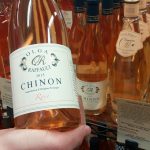 Codey’s rosé choices focus on France and emphasize smaller producers: Domaine de Bagnol from the coastal town of Cassis, Domaine du Gros Noir from Bandol, and Commanderie de Peyrassol Côtes de Provence. Other recommendations from France are Olga Raffault Chinon made with Cabernet Franc in the Loire Valley (bolder than most – great with our pizza), and Domaine Pellehaut from Gascogne in the southwest of France along the border with Spain.
Codey’s rosé choices focus on France and emphasize smaller producers: Domaine de Bagnol from the coastal town of Cassis, Domaine du Gros Noir from Bandol, and Commanderie de Peyrassol Côtes de Provence. Other recommendations from France are Olga Raffault Chinon made with Cabernet Franc in the Loire Valley (bolder than most – great with our pizza), and Domaine Pellehaut from Gascogne in the southwest of France along the border with Spain.
Going further afield, Schloss Gobelsburg Cistercien ($15) from Austria is a mouthful of delicately fruity, slightly spritzy, rosé flavor – one of our favorites. Vin Gris of Pinot Noir from the Robert Sinskey Vineyard in California came highly recommended as did Arca Nova from Portugal – a “party pick” at only $11.
The modern American wine-drinking story began in the 1970s with rosé. Mateus and Lancers, both from Portugal with their distinctive bottles, were the first wine experiences for a generation. White Zinfandel was the next wave in rosé popularity. Following the Zin craze, there was very little interest in traditional French rosé, as Americans moved on to Chardonnay, Merlot, and Sauvignon Blanc. But in the last decade or so, rosé has bounced back as a popular choice. This season, Stew’s in Norwalk expects to sell more than last year’s roughly 1500 cases. That’s a lot of wine!
Rosé is fun, fresh and delicious. Don’t get too serious, don’t spend too much, and don’t buy too little. The joy is in the variety of style, color, source, and price. Gear up for summer by playing the field, and trying as many as you can!








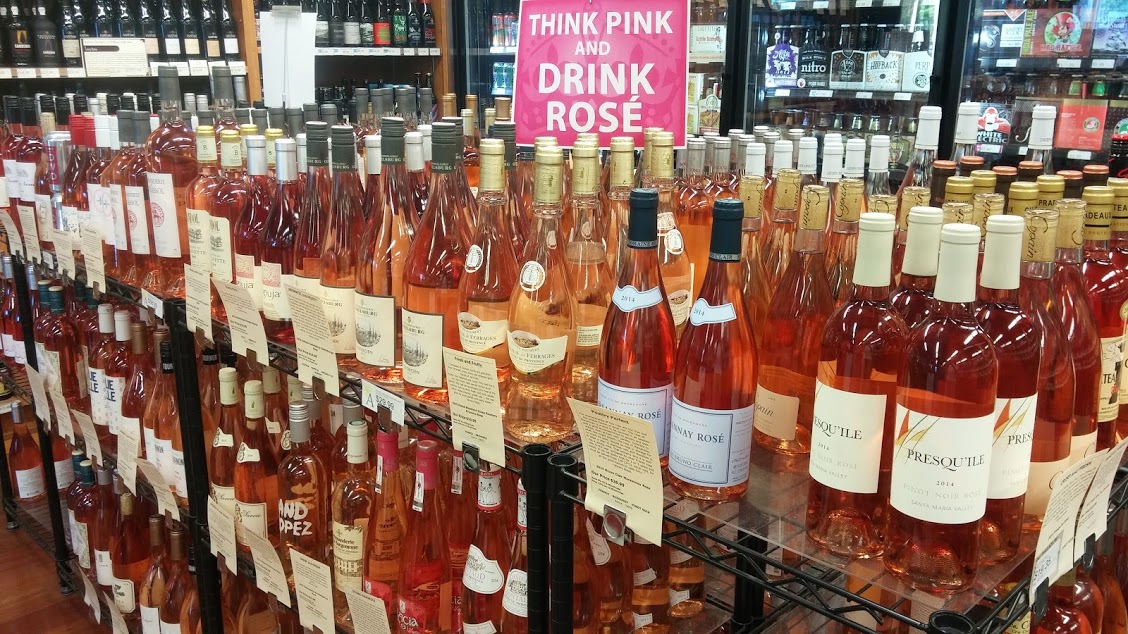
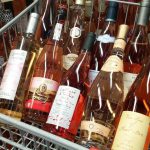

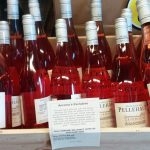

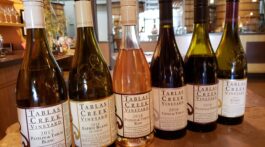


No Comment